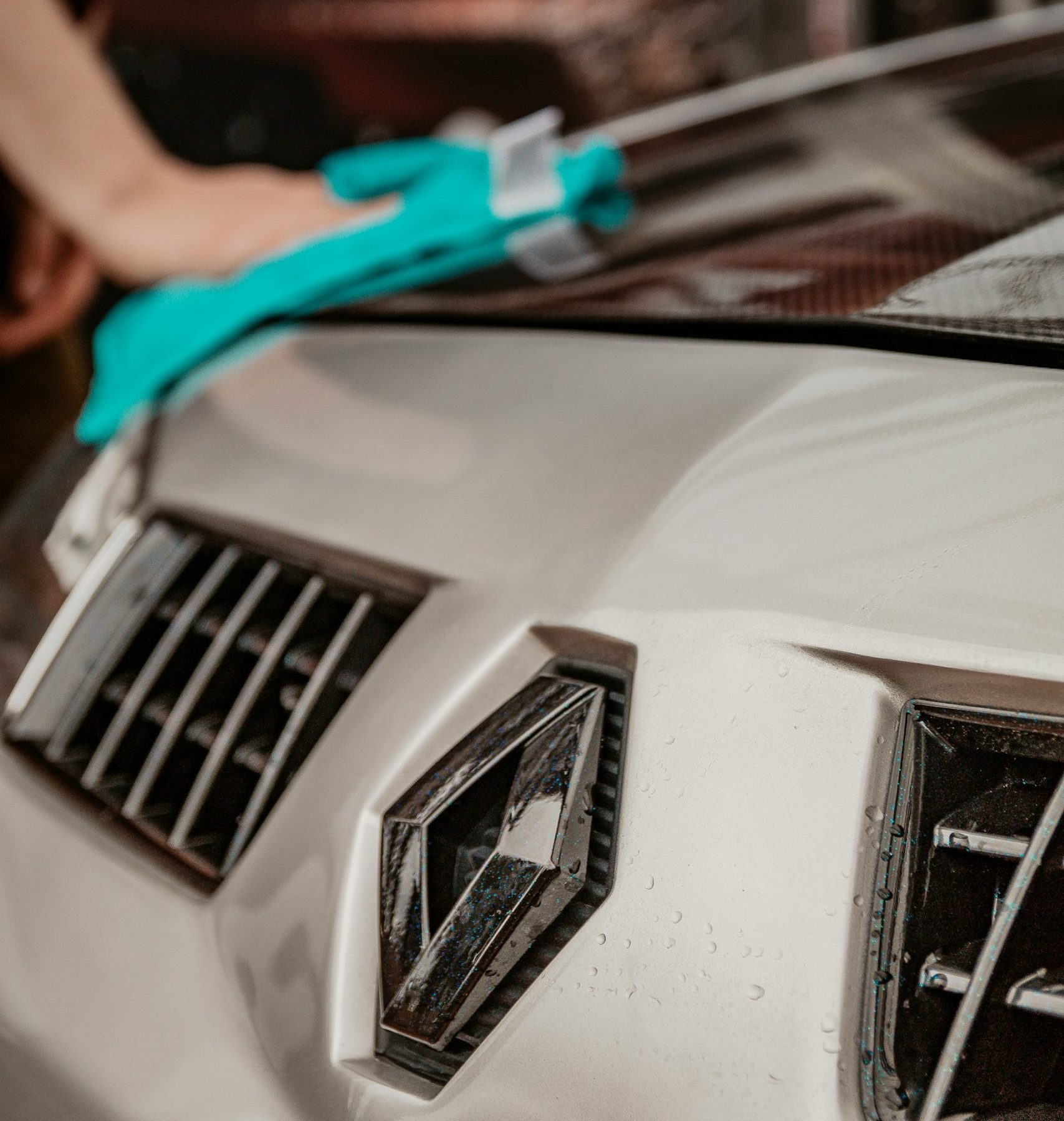Quick Navigation
Choosing the right polisher is crucial for achieving optimal results in car detailing. Among the most debated options are the 15mm and 21mm polishers. This article provides a comprehensive comparison of these two types, examining various critical criteria to help you decide which one suits your needs best.

Orbital Motion and Stroke Length
Difference in Stroke Length
The stroke length of a polisher directly impacts its performance. The 15mm polisher has a shorter stroke, allowing for more controlled movements. This makes it suitable for detailed work where precision is paramount. The shorter stroke means less lateral movement of the pad, reducing the risk of accidentally damaging intricate areas like edges and contours. On the other hand, the 21mm polisher covers more surface area per orbit, leading to faster overall polishing. It has a larger lateral movement, which can remove defects more quickly but requires more skill to manage. This extended reach is particularly advantageous for large, flat surfaces where efficiency is key.
Surface Coverage Efficiency
Surface coverage is another essential aspect influenced by stroke length. The 15mm polisher is ideal for smaller or intricate areas, such as headlights, door handles, and tight angles. Its precision allows detailers to focus on specific spots without affecting surrounding areas. Conversely, the 21mm polisher excels on large, flat surfaces like hoods, roofs, and doors. It significantly reduces the time needed to cover these areas, making it a preferred choice for professionals dealing with extensive detailing tasks. Understanding these differences helps in selecting the right tool for specific tasks, ensuring both efficiency and safety in various applications.
Ease of Use
User Comfort
User comfort is pivotal in prolonged detailing sessions. The 15mm polisher, being generally lighter and more manageable, reduces user fatigue. Its ergonomic design often includes features like adjustable handles and vibration reduction, making it comfortable to use for extended periods. The lighter weight also makes it easier to maneuver, especially in challenging positions. On the other hand, the 21mm polisher may require more strength and control, potentially leading to quicker fatigue during long use. Despite this, many 21mm polishers come with advanced ergonomic features to offset these challenges. Choosing between the two often comes down to personal preference and physical endurance.
Learning Curve
The learning curve associated with each polisher varies. A 15mm polisher is often easier for beginners due to its more forgiving nature. The smaller stroke reduces the likelihood of causing damage, allowing new users to build confidence and skill. Its balanced performance makes it suitable for a wide range of tasks, helping beginners gain experience without overwhelming them. Conversely, the 21mm polisher might present a steeper learning curve, demanding more practice to master its broader, more aggressive stroke. This larger motion requires better control and understanding of the tool’s behavior. However, once mastered, it offers significant advantages in speed and efficiency, making the initial effort worthwhile.
Speed and Performance
Working Speed
Speed is a critical factor where 15mm and 21mm polishers show distinct differences. The 15mm offers precise, detailed work at a steady pace, making it suitable for meticulous detailing. Its controlled motion allows detailers to address specific defects without rushing, ensuring high-quality results. However, it might require more passes to achieve complete correction on larger areas. In contrast, the 21mm provides rapid results over large areas, significantly cutting down overall working time. Its extended stroke length covers more surface per pass, allowing for faster defect removal. This speed advantage makes it ideal for professional settings where time efficiency is crucial.

Effectiveness on Different Paint Types
Effectiveness can vary based on paint types. The 15mm polisher, with its gentler motion, is ideal for softer paints, reducing the risk of damage. It provides enough power to correct minor to moderate imperfections without being overly aggressive. This makes it suitable for cars with delicate finishes or custom paint jobs. The 21mm, however, is more suited for harder paints, efficiently removing deeper imperfections with its powerful action. Its ability to tackle severe defects makes it a valuable tool for detailers working on vehicles with tough, factory-applied finishes. Understanding the paint type and condition is essential for choosing the appropriate polisher.
Safety and Control
Potential for Paint Damage
Safety is paramount in detailing. The 15mm polisher, due to its controlled action, poses less risk of damaging the paint. Its smaller orbit reduces the heat generated during operation, lowering the chance of burning or marring the surface. This makes it a safer option for beginners and those working on sensitive areas. The 21mm, with its aggressive movement, requires careful handling to avoid over-polishing and potential damage, especially on delicate surfaces. Its larger stroke can generate more heat, necessitating constant monitoring to prevent issues. Professional detailers often prefer the 21mm for its efficiency but use it with caution to maintain safety.
Vibration and Noise Levels
Vibration and noise levels can affect both user comfort and precision. The 15mm polisher generally produces less vibration and noise, making it more comfortable for extended use. Reduced vibration minimizes user fatigue and allows for precise control, enhancing overall detailing quality. Quieter operation also contributes to a more pleasant working environment. In contrast, the 21mm polisher might generate higher levels of both vibration and noise. The increased lateral movement and power output contribute to these factors, requiring more focus and endurance from the user. Advanced models often include features to mitigate these effects, but users should still be prepared for the additional demands.
Versatility and Applications
Suitability for Various Detailing Tasks
Versatility is key in choosing a polisher. The 15mm is versatile for a range of tasks, from light correction to finishing. Its balanced performance makes it suitable for both correction and polishing stages, allowing detailers to switch between tasks without changing tools. The 21mm is more specialized, excelling in heavy correction and polishing large areas quickly. Its power and efficiency make it ideal for initial defect removal, but it might not be as effective in tight spots or final finishing. Detailers often use both polishers to leverage their strengths in different stages of the detailing process.
Compatibility with Polishing Pads and Compounds
Compatibility with various pads and compounds is essential for achieving desired results. The 15mm polisher works well with a broad spectrum of pads and compounds, offering flexibility. It can accommodate different pad sizes and types, from cutting to finishing pads, providing versatility for various detailing needs. The 21mm might require specific pads designed to handle its larger stroke, limiting some options. Specialized pads are often needed to maximize its performance and ensure safe operation. Understanding the compatibility between the polisher and accessories helps detailers achieve optimal results while maintaining safety and efficiency.
Cost and Value
Initial Investment
The initial cost of a polisher can influence the decision-making process. Typically, 15mm polishers are more affordable, making them accessible for beginners or hobbyists. Their lower price point does not compromise quality, offering reliable performance for regular detailing tasks. On the other hand, 21mm polishers, often higher in price, reflect their advanced capabilities and professional appeal. The increased cost is justified by their efficiency and power, making them a valuable investment for professional detailers. Evaluating the initial investment against the expected benefits helps buyers choose the right tool for their budget and needs.
Long-Term Maintenance Costs
Long-term maintenance costs are also a factor. The 15mm polisher, with its simpler mechanics, generally incurs lower maintenance costs. Replacement parts and servicing are usually more affordable, contributing to overall cost-effectiveness. Regular cleaning and proper use can extend its lifespan, minimizing the need for frequent repairs. The 21mm, due to its more complex design and higher performance, might have higher long-term upkeep expenses, including replacement parts and frequent servicing. Its intensive use can lead to more wear and tear, necessitating diligent care and maintenance. Weighing long-term costs against performance helps in making an informed decision.

Durability and Longevity
Build Quality
Build quality significantly impacts the durability and longevity of a polisher. Both 15mm and 21mm polishers can be built to high standards, but the 21mm models often feature more robust construction to withstand rigorous use. High-quality materials and engineering ensure reliability and resilience, even under demanding conditions. Evaluating the build quality helps ensure the polisher lasts longer and performs reliably. Detailers should consider factors like motor power, housing materials, and overall design to assess durability.
Expected Lifespan
The expected lifespan of a polisher depends on its usage and maintenance. The 15mm polisher, if well-maintained, can offer a long service life for regular detailing tasks. Its durable construction and balanced performance make it a reliable tool for consistent use. The 21mm, designed for intensive use, also promises durability but requires diligent care to maintain its high performance over time. Regular servicing, proper storage, and adherence to usage guidelines can extend its lifespan. Considering the expected lifespan alongside the initial investment helps in evaluating the polisher’s overall value.







